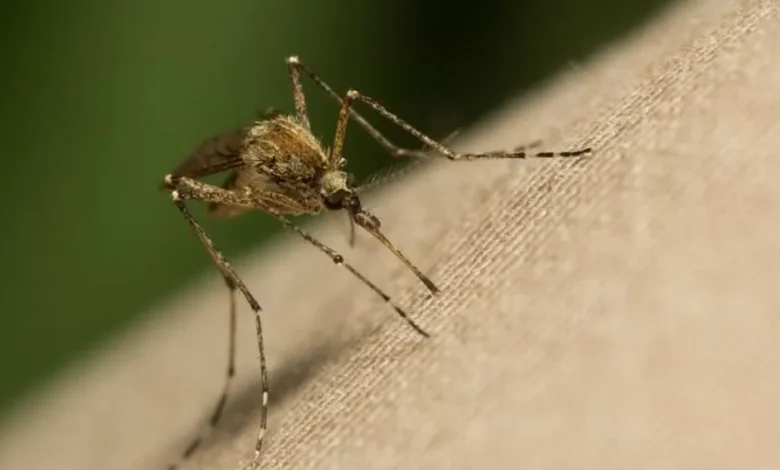The Mosquito Equation: What Attracts Them, What Repels Them, and Why It Matters

Everyone knows the sound—a faint, high-pitched whine just before a sharp sting. And just like that, your peaceful evening becomes an itchy aftermath. Mosquitoes are more than just summer nuisances. They’re opportunists, disease carriers, and experts at finding their way into your personal space. The question is: why you, and why now?
The answer isn’t random. In fact, mosquito behavior follows a clear pattern—a combination of biology, chemistry, and environmental triggers. Understanding what draws them in and what drives them away is the foundation of effective mosquito control.
Attraction Isn’t Accidental
Mosquitoes may be small, but they’re finely tuned machines when it comes to finding their next meal. And the cues they use are surprisingly complex.
Carbon Dioxide: The Welcome Signal
Mosquitoes are attracted to the carbon dioxide we exhale. It’s one of their primary tracking methods. When you breathe, talk, or even laugh outside, you release small puffs of CO₂ that act like breadcrumbs—leading them directly to you.
That’s why they seem to target humans more than pets or plants. And it’s why activities like exercising outdoors, hosting backyard gatherings, or even lounging by the pool tend to draw a crowd.
Heat and Sweat: More Than a Scent
Once they get close, mosquitoes switch tactics. They use thermal sensors to detect heat signatures. If your body is warmer—either due to temperature, activity, or sun exposure—you become an easy target. Add in sweat, which contains lactic acid and ammonia, and you’ve just doubled your appeal.
Contrary to popular belief, it’s not blood type or skin color that determines who gets bitten more—it’s the scent and chemical composition of your skin, especially after sun exposure or physical exertion.
Standing Water: The Breeding Grounds
Mosquitoes aren’t just flying around looking for dinner. They’re also looking for nurseries. Female mosquitoes lay eggs in standing water—any source, no matter how small. Birdbaths, gutters, flowerpots, old tires, even a bottle cap with rainwater is enough.
This is where lawn & ornamental spaces come into play. Overwatered areas, poor drainage, or neglected containers create breeding zones just feet from your living areas. That means mosquito control isn’t just about the flying insects—it’s about preventing the next generation from hatching in your own backyard.
The Unseen Consequences
Beyond itchy bites, mosquitoes pose legitimate health risks. In Florida, where the climate is warm and humid nearly year-round, mosquito-borne diseases are a constant concern. These include West Nile virus, dengue, chikungunya, and Zika—all of which can be transmitted by a single bite.
It’s why homeowners must move beyond reactive swatting. Effective pest control in mosquito-heavy regions isn’t optional—it’s foundational.
What Doesn’t Work (and Why People Still Try It)
There are plenty of DIY mosquito solutions out there—citronella candles, ultrasonic repellents, bug zappers. While they might reduce annoyance in small zones, they don’t tackle the root of the problem.
- Citronella: Masks scent temporarily, but wind quickly disperses it.
- Bug zappers: Kill indiscriminately—usually harmless insects—not mosquitoes.
- Ultrasonic devices: Promoted heavily, but lack peer-reviewed scientific backing.
The issue is that most of these tools only deal with adult mosquitoes in immediate proximity. They do nothing to reduce population growth or eliminate breeding habitats.
Real Mosquito Control Starts Outside
True mosquito control starts with understanding their lifecycle—and disrupting it.
Step One: Remove Their Nurseries
Survey your lawn. If water sits for more than a day, it’s a breeding ground. Empty containers, clean gutters, and adjust irrigation schedules. Consider replacing standing water features with circulating systems.
Step Two: Treat High-Risk Zones
Mosquitoes rest in dense vegetation during the heat of the day. Trim hedges, clear brush, and focus on shaded corners. Insecticide treatments—applied by professionals—can target these areas directly, without broad spraying that harms pollinators or pets.
Step Three: Monitor and Adjust
Mosquito populations rise and fall with weather, rainfall, and seasonality. Regular treatments and monitoring keep populations from spiking. Companies like Pest Solutions Plus often tailor mosquito control efforts to the layout of your property—identifying where pests enter, hide, and reproduce.
Supporting Measures That Actually Work
To supplement professional efforts, homeowners can incorporate supporting strategies that reduce attractiveness and exposure:
- Install screens on windows and porches to limit access indoors
- Use fans in outdoor sitting areas—mosquitoes are weak flyers
- Apply repellents with DEET, picaridin, or oil of lemon eucalyptus when outdoors
- Opt for light-colored clothing, which attracts less attention
- Avoid dusk-to-dawn exposure when mosquito activity is highest
These adjustments don’t eliminate mosquitoes entirely, but they reduce the likelihood of being targeted.
Landscaping and Mosquito Behavior
There’s a direct connection between your landscaping choices and mosquito populations. Lawn & ornamental features often contribute to pest activity more than people realize.
Consider:
- Dense shrubs provide perfect resting zones
- Improperly graded yards collect rainwater in low spots
- Excessive mulch can retain moisture underneath
- Decorative pots and features often collect runoff
Routine lawn maintenance and smart plant selection can go a long way. Using native plants that naturally repel mosquitoes—like lavender, marigold, basil, and lemon balm—adds a layer of passive protection.
Why Prevention Works Best
Mosquito control is a numbers game. A single female can lay hundreds of eggs in her lifetime, which hatch in days. Without intervention, populations multiply rapidly.
That’s why fumigation and barrier spraying work best as part of a broader prevention strategy—not as the only tactic. Disrupting the breeding cycle keeps mosquito populations down before they rise.
When used in conjunction with physical control measures—like drainage improvements, shade reduction, and proper lawn care—you create a property that’s less desirable to pests altogether.
A Smarter Way Forward
There’s no magic button that makes mosquitoes disappear. But there is a formula: eliminate their nurseries, interrupt their movement, reduce your exposure, and treat the zones they live in most.
Providers like Pest Solutions Plus help clients build this strategy from the ground up—literally. With a focus on both habitat management and targeted mosquito control, they help transform pest-friendly environments into protected spaces.
When you understand how mosquitoes operate, you stop reacting to bites—and start preventing them altogether.




